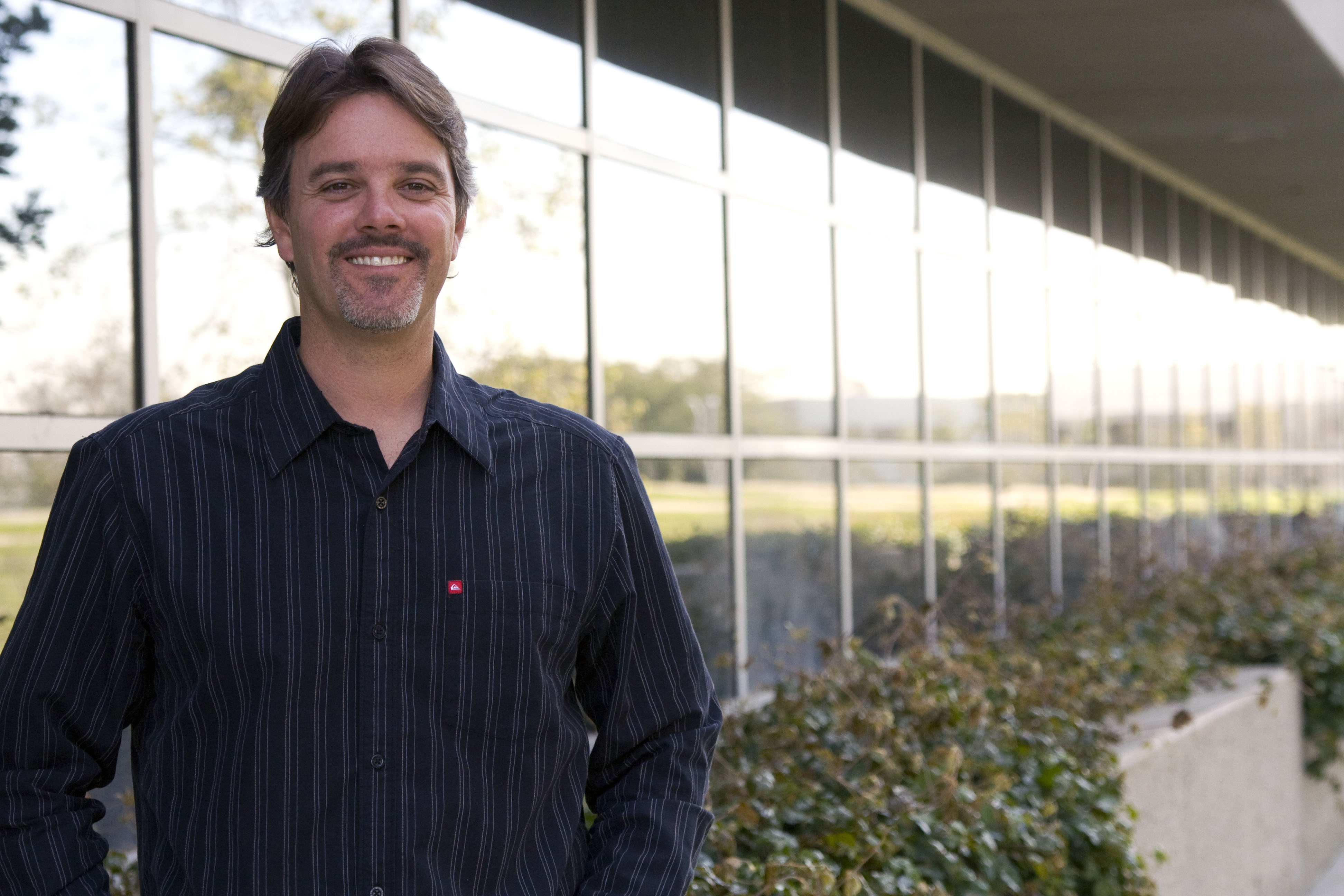UCI researchers study brain region with links to autism and musical ability

UCI researchers study brain region with links to autism and musical ability
- February 4, 2009
- Findings from cognitive neuroscientists Hickok and Saberi will be critical in guiding clinical research on disorders including autism, schizophrenia and stroke-induced aphasia
 UCI cognitive neuroscientists Gregory Hickok and Kourosh Saberi have received a
five year, $2,169,000 grant from the National Institutes of Health to study the organizational
make-up and role of the planum temporale (PT), a region of the brain recent studies
suggest may have links to autism, schizophrenia and stroke induced aphasia. The small
area of the brain has also been linked to spatial hearing, lip reading skills and
musical abilities.
UCI cognitive neuroscientists Gregory Hickok and Kourosh Saberi have received a
five year, $2,169,000 grant from the National Institutes of Health to study the organizational
make-up and role of the planum temporale (PT), a region of the brain recent studies
suggest may have links to autism, schizophrenia and stroke induced aphasia. The small
area of the brain has also been linked to spatial hearing, lip reading skills and
musical abilities.
"The human brain has two PTs; one is located in the left hemisphere and the other
in the right," Hickok explains. "They are asymmetrical with the left PT in a normally
functioning brain being larger than the right side in most people." Due to its enlargement
and placement within the auditory cortex of the left hemisphere where language and
speech functions are "housed", the function of the left PT has long been assumed
to be primarily associated with language abilities.
Recent studies, however, have shown its function extends beyond language to a host
of activities ranging from a person's ability to perceive musical tones and locate
sounds in space to being able to read lips and hone in on a particular conversation
while in a noisy room.
"Professional musicians with perfect pitch, for example, have been found to have
an exaggerated leftward PT asymmetry," says Hickok. "Other research suggests that
the PT plays an important role in spatial hearing - our ability to determine where
a sound is coming from - and our ability to decipher and follow a single conversation
in a noisy environment, the so-called 'cocktail party phenomenon.'"
On a clinical level, studies have found anomalies present in the PT region among
individuals with autism, schizophrenia and a form of stroke-induced aphasia. One
such study, published in the 2005 Journal of Autism and Developmental Disorders,
found that the normally enlarged left PT was not evident in those with autism and
suggested that lack of PT asymmetry may be an early neurodevelopmental indicator
of autism. Another study in the American Journal of Psychiatry found abnormalities
in the PT region of schizophrenic patients with the right PT being larger than the
left. Hickok's own prior research on stroke patients has found that damage to the
PT region contributes to impaired speech production.
"What does all this mean?" asks Hickok. "We know that the PT plays a functional role
in more abilities than was once assumed, in fact, a seemingly disparate array of
abilities. We also know that the PT region has been linked to an equally disparate
array of disorders. What we don't know, however, is how all these observations fit
together. Are there any connections, any common denominators, between the range of
abilities and disorders? We think there are, and that is what we are working to figure
out."
Hickok and Saberi hope to fill in some of these gaps by mapping the functional organization
of the PT using fMRI technology. By charting the brain's responses within the PT
to several different abilities in the same set of studies, it will be possible to
sort out which tasks cluster together in the PT and which may involve distinct sub-regions.
Findings from their study will contribute to a further understanding of the functional
organization within the PT and how that organization supports language and many other
abilities, which, in addition to theoretical implications, will be critical in guiding
clinical research.
University press release: http://today.uci.edu/news/release_detail.asp?key=1874
Also featured in the following:
OC Metro, March 3, 2009
Daily Pilot, March 3, 2009
Share on:




connect with us